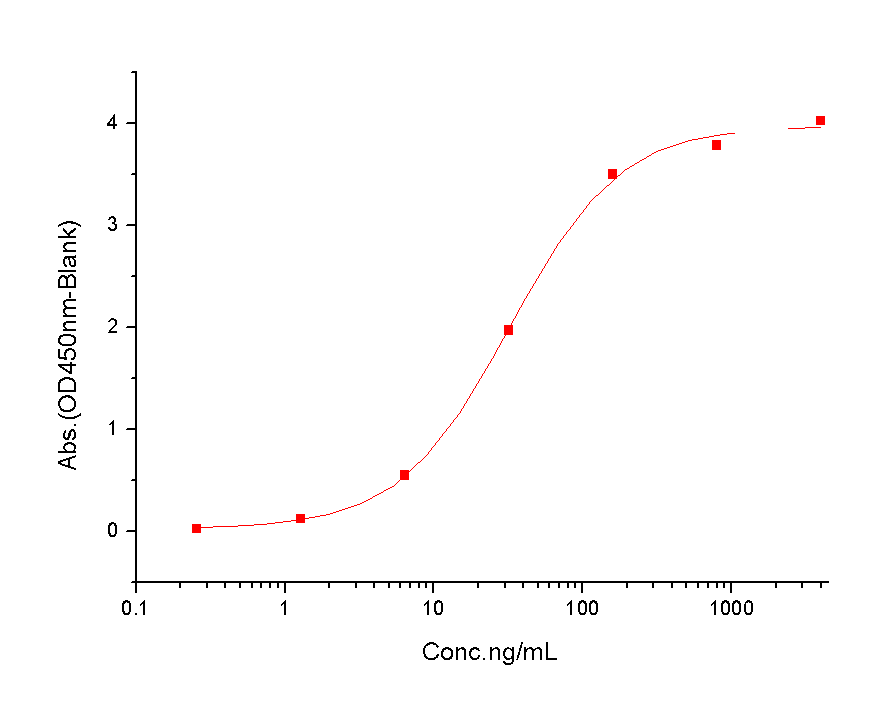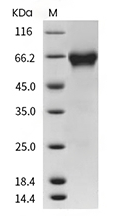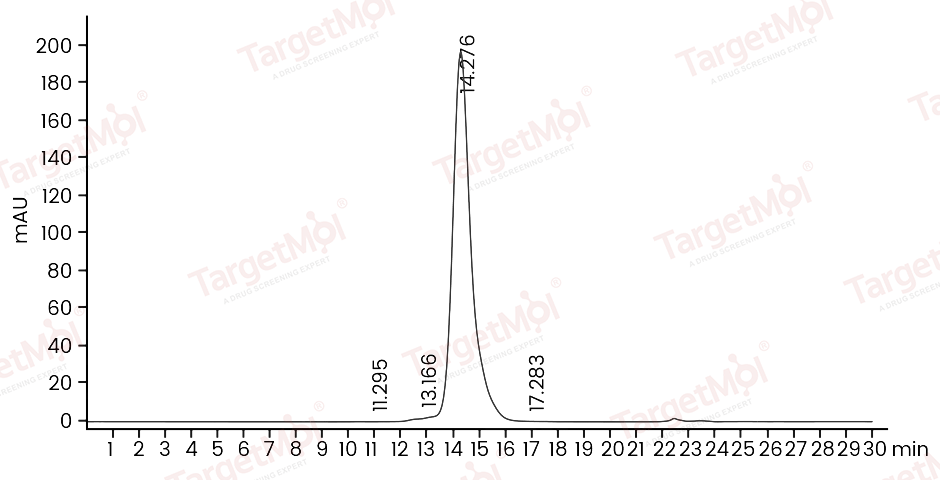Shopping Cart
- Remove All

Your shopping cart is currently empty

| Pack Size | Price | Availability | Quantity |
|---|---|---|---|
| 100 μg | $194 | In Stock |
| Biological Information | 1. Measured by its ability to neutralize Activin-mediated inhibition on MPC11 cell proliferation. The ED50 for this effect is typically 0.02-0.1 µg/mL in the presence of 10 ng/mL recombinant Activin A.
2. Measured by its binding ability in a functional ELISA. Immobilized Inhibin Human, Mouse, Rat, Cynomolgus, Rhesus Inhibin beta A/Activin A at 2 μg/ml (100 μl/well) can bind Human ACVR2B hFc, the EC50 of Human ACVR2B hFc is 12-60 ng/mL.  |
| Description | ACVR2B Protein, Human, Recombinant (hFc) is expressed in HEK293 mammalian cells with hFc tag. The predicted molecular weight is 40.0 kDa and the accession number is Q13705-1. |
| Species | Human |
| Expression System | HEK293 Cells |
| Tag | C-hFc |
| Accession Number | Q13705-1 |
| Synonyms | activin A receptor, type IIB,HTX4,ActR-IIB,ACTRIIB,Activin RIIB |
| Construction | The N-terminal segment (Met 1-Thr 134) from the extracellular domain of Human ACVR2B (NP_001097.2) was expressed with the fused Human IgG1 Fc region at the C-terminus. |
| Protein Purity | ≥ 97 % as determined by SDS-PAGE. ≥ 95 % as determined by SEC-HPLC.   |
| Molecular Weight | 40.0 kDa (predicted) |
| Endotoxin | < 1.0 EU/μg of the protein as determined by the LAL method. |
| Formulation | Lyophilized from a solution filtered through a 0.22 μm filter, containing PBS, pH 7.4. Typically, a mixture containing 5% to 8% trehalose, mannitol, and 0.01% Tween 80 is incorporated as a protective agent before lyophilization. |
| Reconstitution | A Certificate of Analysis (CoA) containing reconstitution instructions is included with the products. Please refer to the CoA for detailed information. |
| Stability & Storage | It is recommended to store recombinant proteins at -20°C to -80°C for future use. Lyophilized powders can be stably stored for over 12 months, while liquid products can be stored for 6-12 months at -80°C. For reconstituted protein solutions, the solution can be stored at -20°C to -80°C for at least 3 months. Please avoid multiple freeze-thaw cycles and store products in aliquots. |
| Shipping | In general, Lyophilized powders are shipping with blue ice. |
| Research Background | ACVR2A and ACVR2B are two activin type II receptors. ACVR2B is integral to the activin and myostatin signaling pathway. Ligands such as activin and myostatin bind to ACVR2A and ACVR2B. Myostatin, a negative regulator of skeletal muscle growth, is regarded as a potential therapeutic target and binds to ACVR2B effectively, and to a lesser extent, to ACVR2A. The structure of human ACVR2B kinase domain in complex with adenine establishes the conserved bilobal architecture consistent with all other catalytic kinase domains. Haplotype structure at the ACVR2B and follistatin loci may contribute to interindividual variation in skeletal muscle mass and strength. Defects in ACVR2B are a cause of left-right axis malformations. |

Copyright © 2015-2024 TargetMol Chemicals Inc. All Rights Reserved.